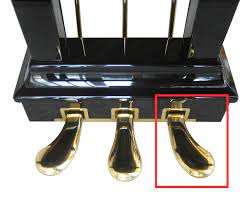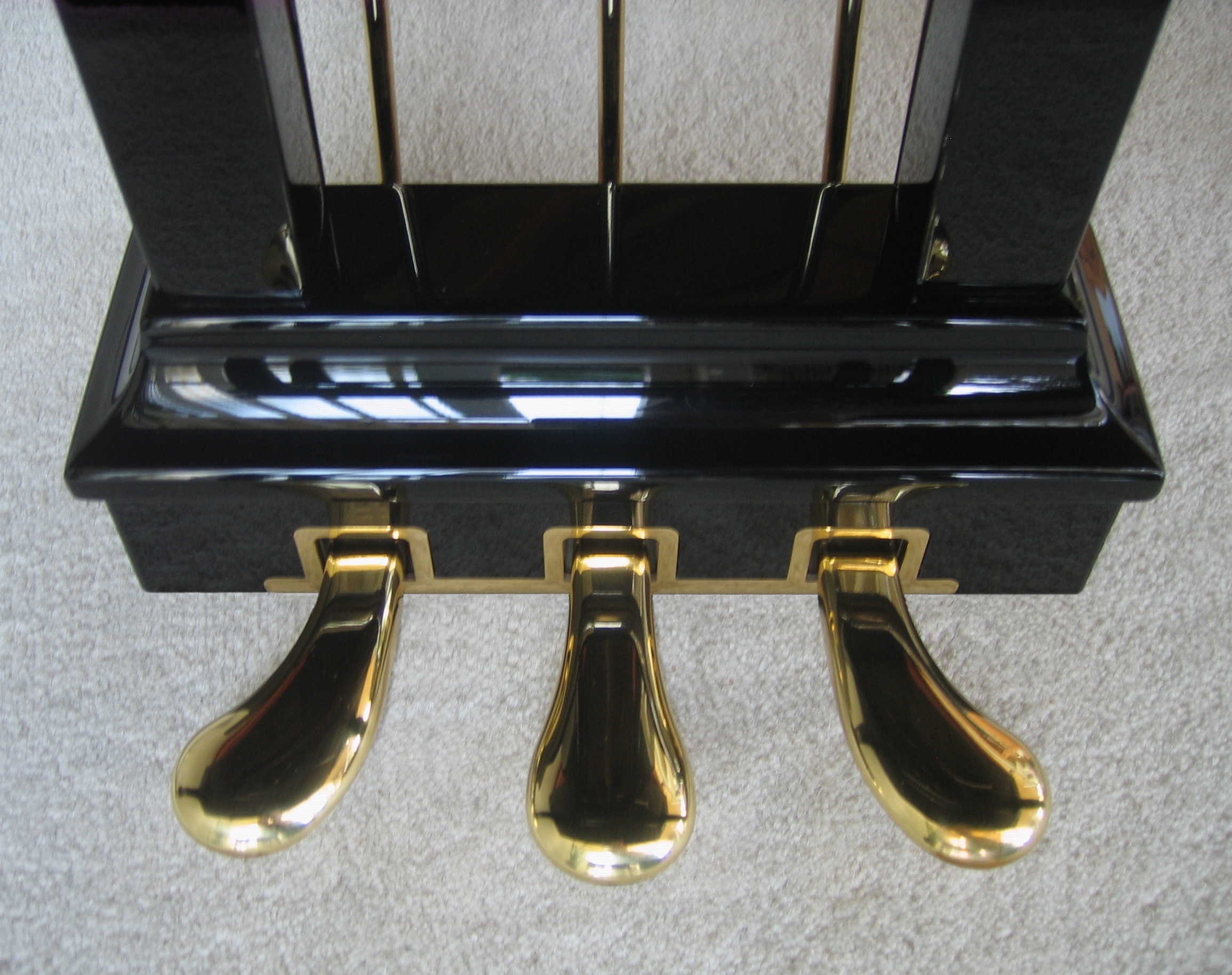Popular pianist and comedian Victor Borge once said that “people always asked me why a grand piano has three pedals, and I respond by saying the middle pedal is used in separating the other two pedals, which makes it bad news for people with three feet.”
So many people think the middle pedal is useless, but piano manufacturers keep adding it. So what does the middle pedal on the piano do? What purpose does the middle pedal serve?
These are questions continuously being asked when people wonder about the role the middle pedal plays on a piano. There are four types of middle pedals available on a piano. These pedals are the sostenuto pedals, bass sustain pedals, silent pedals, and practice pedals.
The pedal that sustains the lowest is the bass sustain pedal, and the sostenuto pedal is responsible for sustaining notes. Softening the piano is the job of the practice pedal, while the silent pedal handles the muting of every other pedal on the piano.
We will take time to talk to you about the role of these four pedals, and we encourage you to stay glued to this post as it provides you with detailed answers regarding the role of the middle pedal on a piano.
Read This: How Many Keys Are There On A Piano
Content Navigation
What Does The Middle Pedal On The Piano Do

Bass Sustain Pedal
Bass sustain pedals are responsible for sustaining lower octaves, and how is the user when playing the piano? There are times when playing the piano requires the melody to move faster than the bass line, and the bass line also involves holding down a note for a longer period of time.
Having a bass sustain pedal on a piano means the pedal is tasked with holding out bass notes without producing muddy sounds.
Sostenuto Pedal
Based on history, sostenuto pedals are the original middle pedals. It is the preferred type of middle pedal by almost every pianist. This explains why pianists refer to the middle pedal as sostenuto even when the sostenuto pedal isn’t there.
In addition, the sostenuto pedal is sometimes considered the selective damper pedal. Its role is in helping the pianist select what notes to sustain and what notes to dampen.
Check this: Key Notes On How To Sight Read For Beginners
How To Use The Sostenuto Pedal
Using the sostenuto pedal involves striking and holding down a key before going on to press the sostenuto pedal. As long as the sostenuto pedal stays down, the note will keep ringing.
This is different from the damper pedal, which plays other notes and still won’t sustain. So you might be thinking about the right time to make use of a sostenuto pedal, and it is used when you have base notes to hold down for a long period.
Practice Pedal
On an upright piano, you will find it very difficult to create a fully functional sostenuto pedal; This explains why upright pianos use a practice pedal or bass sustain pedal.
Making the piano sound warm and soft is the duty of the practice pedal, and you will experience a piece of felt lowering between the hammers and strings when you press the practice pedal. Thus, when practicing in the vicinity, the practice pedal is exactly what you need to practice.
Silent Pedal
In some other designed pianos, the middle piano is designed to activate the silent pedal. Activating this pedal will cause the silent system to make sure the hammer doesn’t strike the strings, but it makes sure electronic sensors pick up the velocities of the hammer.
The system translates these sounds into digital sounds, and pianists can use headphones to practice without disturbing anyone.
How Do The Sostenuto Pedal Function
Operating the sostenuto pedal will require you to make use of a well-designed and sophisticated mechanical system of any other pedal, and trust this article when it says you would curiously want to see how a sostenuto pedal functions.
There are so many videos on YouTube that will show you in detail how a sostenuto pedal works, and this post recommends watching a video by Nature Sol. Below are some key points of the sostenuto pedal;
- Every damper comes with a sostenuto tab.
- A sostenuto rod has a blade-shaped design that runs very close to a damper
- A damper tab will be lifted when a key gets lowered, and this damper tab is lifted above the rod
- The sostenuto rod will spiral beneath the elevated sostenuto tab when a pedal is lowered
- Sostenuto rod will not catch a corresponding damper when other notes are played.
The Sostenuto Pedal Invention
In May 1874, Waldo Hanchett filed for a sostenuto pedal on a piano similar to the pedals that are in use today, and he sent his son to show to the Steinways his invention looked like a few months later.
A journal from the Steinways, later on, showed they were impressed by the addition and function of this new pedal, but they went on to develop their own pedal instead of buying from Waldo Hanchett.
In two weeks, they were able to develop a pedal of their own, and they claimed they didn’t find Waldo Hanchett’s pedal patent enough.
The Steinways later told Waldo Hanchett they were not impressed with his pedal, and Hanchett decides to sue the Steinways after realizing they had gone on to design their own sostenuto pedal. These more are some of the mysteries surrounding the invention of the sostenuto pedal.
Final Note – What Does The Middle Piano On A Piano Do
From everything we have said in this article, the middle pedal has so much influence and importance as it serves various functions. On the other hand, the piano has several pedals that perform different functions, and these pedals once again are the sostenuto, bass sustain, silent, and practice pedals.
Knowing what each of these pedals performs will help you get the best out of them. Every information we have provided in this post about these pedals will also help you get the best out of these pedals. Be free to experiment with any of these pedals, and you will develop more at playing the piano.
Related Posts
How To Sight Read For Beginners
Speaker Distortion At High Volumes

